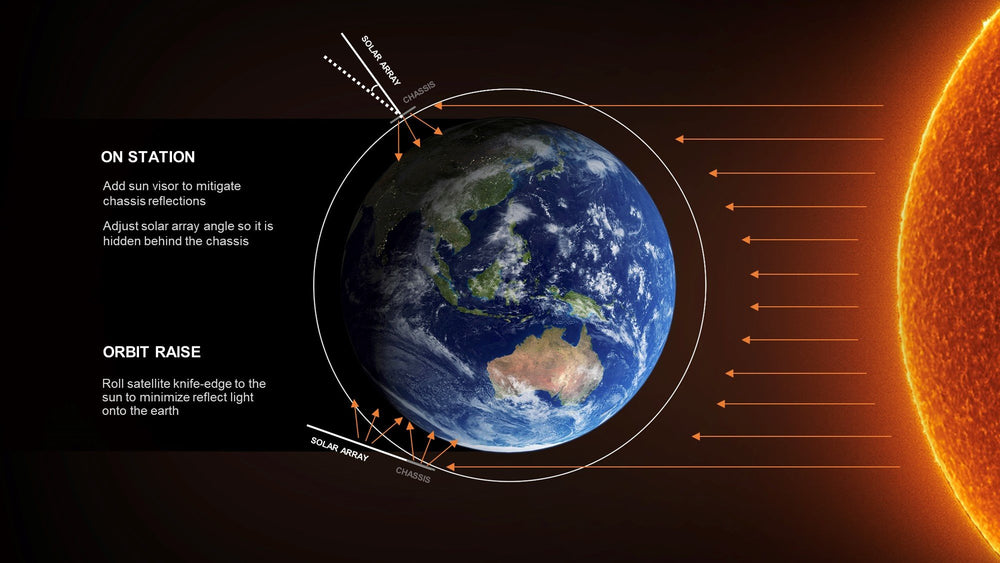Featured Image Source: SpaceX
SpaceX aims to surround Earth with small internet-beaming Starlink satellites to offer affordable broadband internet globally. The Starlink network will initially be composed of 12,000 satellites. As of today, the company has deployed 540 Starlink satellites into Low Earth Orbit. SpaceX is preparing to deploy the tenth cluster of Starlink satellites. Initially, the company planned to conduct the launch earlier this week, on June 26, but the launch was postponed, a new launch date has not been announced. – “SpaceX is standing down […] in order to allow additional time for pre-launch checkouts in advance of its tenth Starlink mission. Falcon 9 and its payloads, 57 Starlink satellites and 2 satellites from BlackSky, a Spaceflight customer, remain healthy. SpaceX teams are evaluating the next earliest launch opportunity and will announce a new target date once confirmed,” company representatives wrote.
Standing down from today’s Starlink mission; team needed additional time for pre-launch checkouts, but Falcon 9 and the satellites are healthy. Will announce new target launch date once confirmed on the Range
— SpaceX (@SpaceX) June 26, 2020
Spaceflight Inc. selected SpaceX as a launch provider to deploy 2 BlackSky Earth-imaging satellites alongside Starlink satellites, under a SpaceX SmallSat Rideshare Program contract. “BlackSky Global spacecraft will deploy sequentially beginning 1 hour and 1 minute after liftoff, and the Starlink satellites will deploy approximately 1 hour and 32 minutes after liftoff.”
“The Starlink satellites will be deployed in a circular orbit…” SpaceX stated, “Additionally, all Starlink satellites on this flight are equipped with a deployable visor to block sunlight from hitting the brightest spots of the spacecraft – a measure SpaceX has taken as part of our work with leading astronomical groups to mitigate satellite reflectivity.”
"All Starlink satellites on this flight are equipped with a deployable visor to block sunlight from hitting the brightest spots of the spacecraft – a measure SpaceX has taken as part of our work with leading astronomical groups to mitigate satellite reflectivity."
Astronomers voiced their concerns over ‘Starlink appearing too bright.’ Days after deployment, the fleet of Starlink satellites navigate at lower altitudes making the fleet visible to the naked eye. The reflectivity is due to the sun’s light hitting the satellites’ brightest parts, the solar panel and antenna arrays. It can take over three weeks for all satellites to reach their operational altitude(s) where the satellites’ brightness is significantly reduced. The first collection of satellites deployed operate at an altitude of 550-kilometers above Earth. SpaceX plans to make the satellites “generally invisible to the naked eye within a week of launch” by modifying the satellites orientation to minimize the potential of reflectivity as each satellite maneuvers through orbits in space. Also, by integrating a 'deployable visor' to each satellite.

Source: SpaceX
During the upcoming mission all 57 Starlink satellites will feature a deployable visor called ‘VisorSat,’ developed by SpaceX engineers. VisorSat is designed to cover the satellites’ most reflective surfaces, acting as a sunshade as satellites’ orbit Earth. VisorSats are made up of a radio-transparent foam material used to minimize the potential for reflection on the satellites' chassis where the antennas are located. “The key to making Starlink darker is to prevent sunlight from illuminating these white surfaces and scattering via reflection toward observers on the ground,” SpaceX explained, “Satellites are visible from the ground at sunrise or sunset. This happens because the satellites are illuminated by the Sun but people or telescopes on the ground are in the dark. These conditions only happen for a fraction of Starlink's 90-minute orbit.”
“SpaceX is launching Starlink to provide high-speed, low-latency broadband connectivity across the globe, including to locations where internet has traditionally been too expensive, unreliable, or entirely unavailable,” the company wrote. “We also firmly believe in the importance of a natural night sky for all of us to enjoy, which is why we have been working with leading astronomers around the world to better understand the specifics of their observations and engineering changes we can make to reduce satellite brightness.”
SpaceX aims to roll out Starlink broadband internet service to the public before the end of this year, initiating with Northern United States and Canada.





